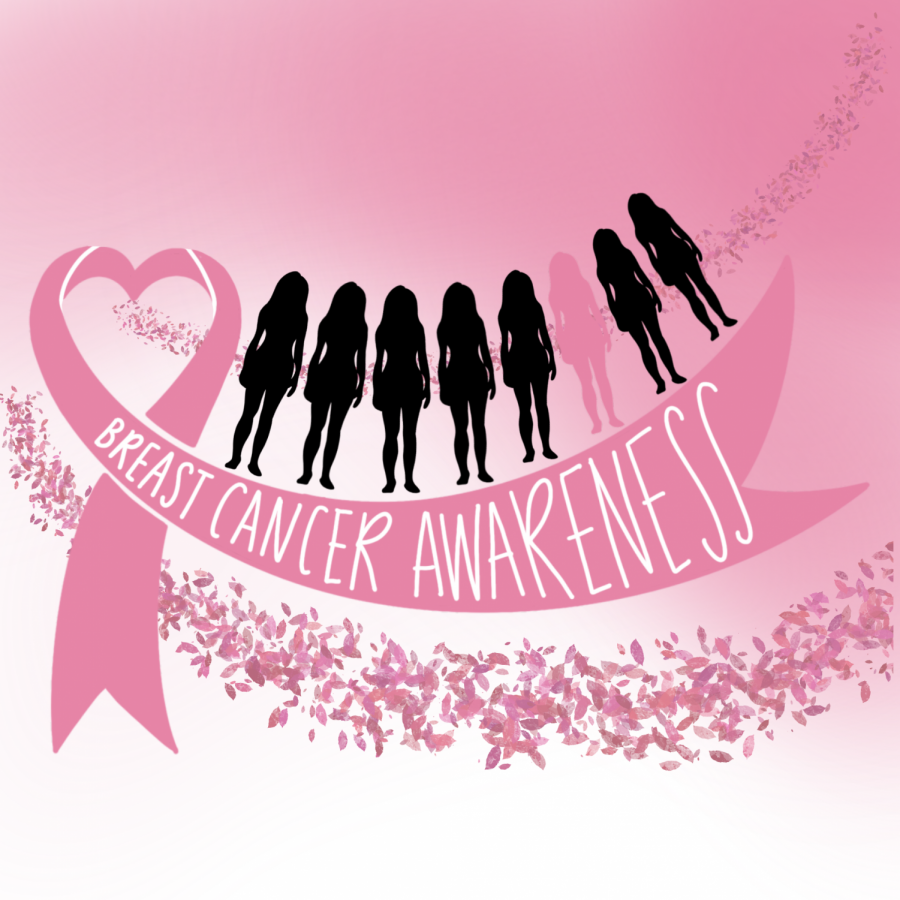Breast Cancer Awareness Month
October 27, 2020
October signifies the beginning of semi-cold weather and earlier sunsets, but it is also widely known as Breast Cancer Awareness month. With approximately 1 in 8 U.S. women being diagnosed with breast cancer in their lifetime, the signature pink ribbons and annual rallies make Breast Cancer Awareness Month one of the more well-known awareness months.
Breast cancer, like many other cancers, occurs when cells mutate and grow rapidly in the breast area. This type of cancer is most common in women over the age of 50, and can occasionally occur in men. Some symptoms to look out for include: a lump in the breast or the armpit area, swelling, flakiness, pain, and irritation in the breast.
Treatment varies depending on the stage of breast cancer that the patient is in. Often, patients can undergo multiple treatments for the best results. Lumpectomy, mastectomy, axillary lymph node dissection, and sentinel lymph node biopsy are all different types of surgeries that patients can undergo. Lumpectomy is the small removal of a tumor or the areas of the breast around the tumor, while mastectomy is the removal of the entire breast. In the earlier stages of breast cancer, lumpectomy may be performed; however, as the cells start to mutate more rapidly, a removal of the entire breast would ensure any further cell production. Each individual would receive the necessary treatment and surgeries for their specific stage and type of cancer. After lumpectomy or mastectomy, those undergoing surgery may also get implants to reshape their breasts; however, it is not necessary.
Certain inherited genes like BRCA1 and BRCA2 can increase a person’s chances of getting breast cancer. Inheritance of BRCA1 and BRCA2 can cause breast or ovarian cancer at a younger age, but are also notably associated with other cancers, including fallopian tube cancer in women and prostate cancer in men. People with family members who were affected by breast cancer may want to check with their doctors, as they may have inherited those genes.
Before COVID-19 hit, many would raise awareness during October by walking in relays. Events such as Relay for Life, Bark for Life, and Walk for Hope all help spread awareness and raise money for cancer patients and research. With the inability to hold walks in real life during 2020, Relay for Life is holding virtual events with guest speakers and chances to donate. Virtual donations and fundraisers are still active on their website for those who wish to help.
“Our club events were mostly based on participation in neighboring relays or helping to fundraise for cancer research. Because of COVID-19, Hope Can Cure Cancer has decided to hold virtual fundraisers in order to contribute to events online during these tough times,” says Hope Can Cure Cancer Club Co-President senior Kaitlyn Li.
Without any steady solutions to the current pandemic, events may be delayed until further notice. For organizations like City of Hope, Relay for Life, and The Pink Fund, the pandemic poses no restraints on those who wish to donate for cancer research programs or support families impacted by cancer. If breast cancer runs in your family, it would be beneficial to check up with your doctor every so often in order to limit your risks. If you experience any signs of breast cancer, make sure to seek a doctor for a checkup right away.
Our very own Apache News talked about the importance of Breast Cancer Awareness Month and featured an interview with Mrs. Jessica Vannasdall on her experiences dealing with breast cancer. To watch their story, click HERE. To view the Apache News website for more stories, click HERE.
Graphic courtesy of AVARI WANG

